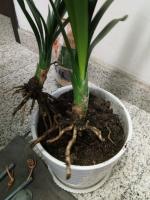How to Help a Tomato Plant Grow
Tomato plants are a popular addition to many home gardens due to their versatility, nutritional value, and delicious taste. However, growing a tomato plant successfully can be challenging for both novice and experienced gardeners. In this article, we will provide several tips and techniques on how to help a tomato plant grow and produce a bountiful harvest.
Choose the Right Location
The first step in helping your tomato plant grow is selecting the ideal location for planting. Tomatoes require a lot of sunlight, so choose an area that gets at least eight hours of direct sunlight every day. Additionally, the soil should be well-drained, loose, and fertile with a pH of 6.0 to 7.0. Tomatoes also prefer warmer temperatures, so wait until after the last frost to plant your seedlings outdoors.
Provide Adequate Water and Nutrients
Tomato plants require consistent moisture throughout the growing season to thrive. Water your plants deeply one or two times per week, providing enough moisture to reach the root system, but not so much that they become waterlogged. Additionally, fertilize your tomato plant regularly, using an all-purpose fertilizer that provides phosphorus, nitrogen, and potassium. Fertilize once when transplanting, and then apply fertilizer once every two weeks thereafter.
Support Your Plants
As your tomato plants grow, they will need support to prevent them from breaking due to the weight of the fruit or from being damaged by external factors, such as wind. Use stakes, trellises, or cages to support your plants. It is best to provide support early in the growing process to prevent damage to the plant roots upon attaching support later in growth.
Prune Your Plants
Pruning your tomato plants can help maximize growth, prevent disease, and increase fruit production. Trimming off the lower leaves of the plant will improve air circulation and reduce the chance of disease. Removing the suckers or small branches that grow in the crotches of the main stem and branches will redirect the plant's energy to the fruit-bearing branches, resulting in larger fruit.
Control Pests and Diseases
Tomato plants are vulnerable to numerous pests and diseases, such as aphids, whiteflies, and fungal infections. To prevent these issues, keep the plant and its surroundings clean, remove any fallen leaves and debris, and use natural pest control methods if possible. If necessary, use pesticides or fungicides to prevent the spread of diseases, according to the recommendations on the product’s label.
Conclusion
If you follow these tips and techniques, you can help your tomato plant thrive and produce a bountiful harvest. Remember to choose the right location, provide adequate water and nutrients, support your plants, prune when necessary, and control pests and diseases. With a little patience and care, your tomato plants will reward you with delicious, juicy tomatoes all season long.

 how many times do yo...
how many times do yo... how many planted tre...
how many planted tre... how many pine trees ...
how many pine trees ... how many pecan trees...
how many pecan trees... how many plants comp...
how many plants comp... how many plants can ...
how many plants can ... how many plants and ...
how many plants and ... how many pepper plan...
how many pepper plan...































